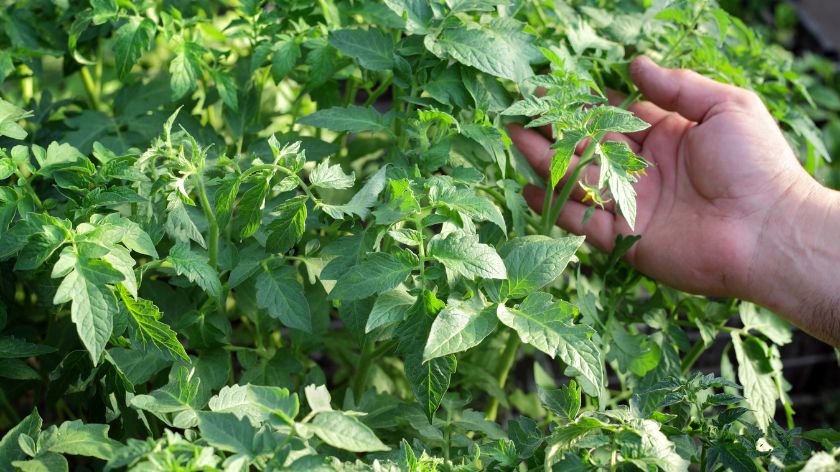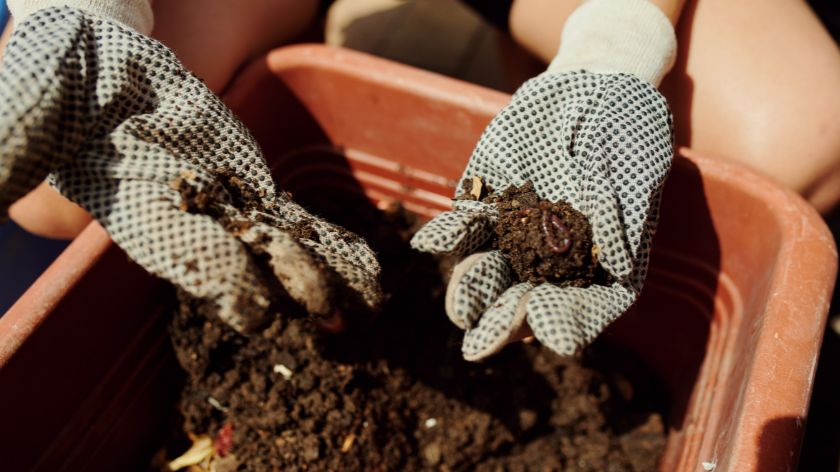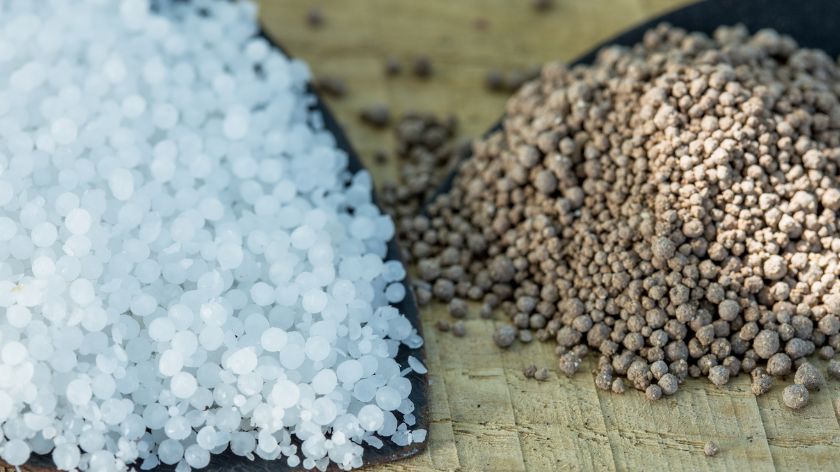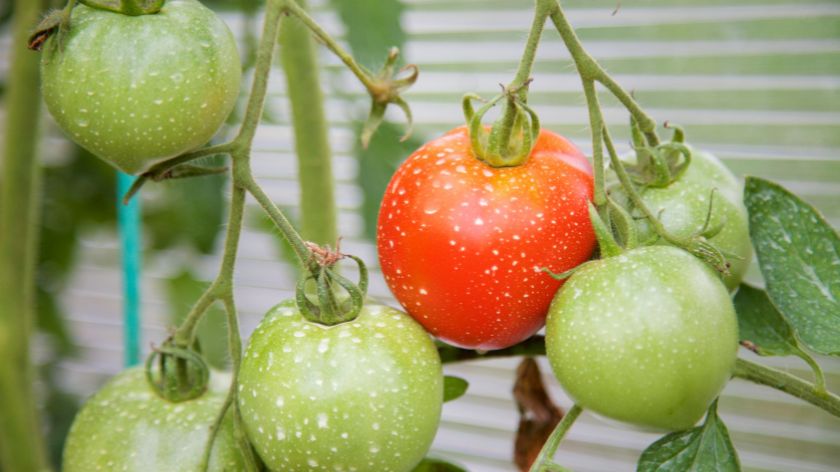When is it necessary to fertilize tomatoes and how to do it in the best way? A tomato plant requires a lot of nutrients to grow and produce healthy fruit. To ensure your tomato plants get the nutrients they need, it’s important to provide them with fertile soil, and that often means adding fertilizer. A soil test can help you determine what nutrients your soil is lacking and what type of fertilizer your soil needs to keep its primary and secondary nutrients adequate.

Do you need to fertilize tomatoes?
Tomatoes would benefit from fertilizer applications at several different stages of their growth. Application of the right product at the right time supports healthy growth, flowering and fruit development, fruit quality and disease resistance. Also, you may want to consider changing the soil before planting your seedlings.
To bigger and juicier tomato fruits in just 4 steps
If you are growing tomatoes in the garden for the first time, your soil probably has enough nutrients. A soil test for a new planting area or for previously used land can tell you if your land is unfit for purpose in any way.
Tomato grown in pots should be regularly supplemented during the growing season, at most twice a month, depending on the type of potting mix used. A balanced NPK fertilizer, such as 5-5-5 or 5-10-5, dissolves best during watering.
Advice
The ideal soil pH for tomatoes is 6.2 to 6.8. No matter what fertilizer you add, if your soil pH is too acidic or too alkaline, tomatoes will not do well. Soil tests therefore include pH analysis. If it is too high or low, you must correct it before applying fertilizer.
Types of fertilizers for tomatoes
Organic and commercial fertilizers don’t just correct deficiencies; when used correctly, they improve yield and fruit quality. The products are formulated to stimulate a certain phase of plant growth: from vegetative to final, when they affect the quality of the fruit. They can be found as a liquid, in the form of granules, powder, as well as in many other forms.
Organic fertilizer
Fish emulsion is a liquid fertilizer with a high content of nitrogen and other trace elements, such as magnesium and calcium. It is a thick liquid diluted in water and applied at ground level, as well as for foliar feeding. It can be used multiple times throughout the season. However, if used incorrectly, it can burn young leaves and stems.
Animal manure should be aged before application, as nitrogen levels in fresh manure can also burn plants. This fertilizer is mainly applied to the ground before transplanting seedlings. Aged manure is a product that is often sold in sacks in square foot quantities.


Bone and blood meal are powders that add phosphorus and nitrogen to the soil. It takes several weeks for them to dissolve before the plants can use them, but they remain effective for up to several months.
BLOOD FLOUR: WHAT IT IS AND HOW IT CAN HELP YOUR GARDEN
Organic fertilizers vs soil improvers
Organic fertilizers are different from soil conditioners because they feed your plants. Breeders improve soil health and structure and generally take longer to produce results. For example, compost is an excellent organic soil conditioner.
Commercial fertilizers
Commercially produced fertilizer is formulated to immediately provide specific nutrients to feed your plants. Labels indicate the ratio of NPK, i.e. on the percentage of nitrogen, phosphorus and potassium. Tomatoes cannot grow without adequate amounts of these primary nutrients.
How to use mineral fertilizers correctly
Many companies offer fertilizers specifically for tomatoes, with labels that also list macronutrients such as magnesium and calcium. When purchasing these products, it is important to read and understand the labels.


For example: Balanced NPK, such as 20-10-10, consists of 20 percent nitrogen, 10 percent phosphorus, and 10 percent potassium. The rest is a supplement and may include small amounts of other minerals and vitamins.
Products with a higher P number can be marked as flowering enhancers. Knowing at which stage of growth your plants use the highest amounts of these nutrients helps you choose the best product.
Advice
Commercial fertilizer can quickly correct deficiencies, but plants also use them up quickly. Excessive use with repeated applications can cause the accumulation of harmful salts in the soil. Tomato plants benefit from secondary macronutrients (eg magnesium, calcium, etc.) along with minerals and vitamins. Even when your soil is healthy to begin with, a nutrient boost, properly applied several times during the growing season, can improve your crop.
When and how often should tomatoes be fertilized?
Tomatoes are best fertilized immediately before transplanting, when planting, before flowering and when the fruits are small.
Before transplanting it would be good to add aged manure or compost. Nitrogen supplementation gives plants a good start. Compost also works well as a side dressing in the middle of the season, as it helps to keep the nitrogen level stable.
At the time of planting fertilizers with a higher percentage of nitrogen, such as 20-10-10, can be applied to support healthy foliage and growth. Nitrogen-rich fish emulsion can be added every two weeks, and blood meal every six weeks during the growing season.
About two weeks before flowering is a good time to use a fertilizer with a higher P value, such as 5-15-5. (Depending on the variety, tomato seedlings begin flowering between 30 and 45 days after transplanting.) Alternatively, you can use a balanced fertilizer with a lower nitrogen content, such as 10-10-10. Bone meal is an organic alternative that releases phosphorus for up to four weeks.


When the first fruits are small, about the size of a golf ball, the application of a balanced fertilizer maintains optimal nutrition for continued healthy fruit growth and development.
Source: THE SPRUCE
Source: www.agromedia.rs


